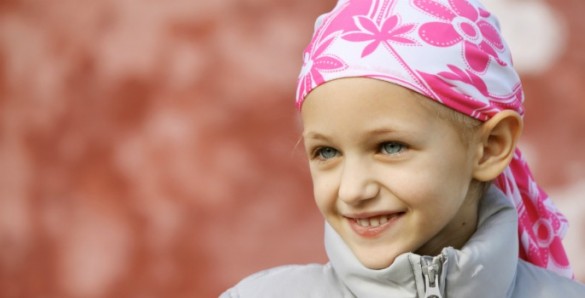
A large, retrospective study of the children of childhood cancer survivors who were treated with radiation therapy and/or some forms of chemotherapy found that the offspring do not have an increased risk for birth defects compared to children of cancer survivors who did not receive such treatments.
The findings provide reassurance that increased risks of birth defects are unlikely for the children of childhood cancers survivors and can help guide family planning choices for those survivors.
The study was published online today in the Journal of Clinical Oncology.
“We hope this study will become part of the arsenal of information used by the physicians of childhood cancer survivors if reproductive worries arise,” said lead author Lisa Signorello, associate professor of medicine at Vanderbilt University Medical Center and senior epidemiologist at the International Epidemiology Institute in Rockville, Md. “[rquote]Childhood cancer survivors face real reproductive concerns, including unknowns related to the effects of therapy. But, hopefully this study will provide some reassurance that their children are unlikely to be at increased risk for genetic defects stemming from their earlier treatment.[/rquote]”
Childhood cancer patients frequently receive aggressive, life-saving radiation and chemotherapy treatments that can affect their ability to have children. For girls, radiation to the pelvis – and the resulting damage to the uterus – has been associated with a risk for miscarriage and preterm birth, and effects on the ovaries can lead to infertility.
Radiotherapy and chemotherapy with alkylating agents can damage DNA. Previous studies have not determined whether genetic damage from a parent’s treatment could be passed down to their offspring. Genetic-based birth defects are rare in the general population (about 3 percent), and while previous research indicated little or no increased risk for birth defects among the offspring, the studies were relatively small in size and lacked detailed information about radiation and chemotherapy treatments, such as specific radiation doses to the testes and ovaries.
In the current study, investigators used information from the Childhood Cancer Survivor Study, a large retrospective study of treatment and outcomes in more than 20,000 childhood cancer survivors diagnosed between 1970 and 1986. Signorello and her colleagues examined data from 4,699 children of 1,128 men and 1,627 women who were five-year childhood cancer survivors. The survivors reported their children’s health problems through questionnaires, and investigators also examined medical records, focusing on survivors’ history of radiation to the testes or ovaries and chemotherapy with alkylating agents.
Of the survivors, 63 percent (1,736) had received radiation for their cancer as children, and 44 percent of men (496) and 50 percent of women (810) had received chemotherapy with alkylating agents. Overall, 2.7 percent (129) of the survivors’ children had at least one birth defect, such as Down syndrome, abnormally short stature (achondroplasia) or cleft lip. Researchers found that 3 percent of children of mothers exposed to radiation or treated with alkylating chemotherapy agents had a genetic birth defect, compared to 3.5 percent of children of cancer survivors who did not have such exposures.
Only 1.9 percent of children of male cancer survivors who received these DNA-damaging treatments were reported to have such birth defects, compared to 1.7 percent of children of male survivors who did not have this type of chemotherapy or radiation. The researchers concluded that children of cancer survivors were not at higher risk for birth defects stemming from parents’ exposure to chemotherapy and/or radiation.
The researchers noted that a strength of their study is the comparison they made to the children of other cancer survivors and not to the children of people randomly sampled from the general population. Signorello said that comparing cancer survivors to individuals in the general population can be difficult because the latter may not be as thorough in reporting health problems of their children, and the children of cancer survivors may be under heightened clinical surveillance and may appear to have higher rates of birth defects as a result. The investigators determined that the prevalence of birth defects among the cancer survivors’ children was similar to what has been reported in the general population.
“The possibility of birth defects in offspring has been a lingering concern among cancer survivors because it’s hard to address,” Signorello said. “It took years to validate the parents’ self-reported outcomes, and to assemble and use the medical records of radiation and chemotherapy treatment exposures to allow us to quantify their exposure doses. [lquote]These are the strongest results to date, adding greater certainty to other studies examining this common concern among survivors of childhood cancer.[/lquote]”
The researchers would like to continue to sequence the DNA of families of childhood cancer survivors (survivors and their children) to see if there is any evidence of radiation- or chemical-induced genetic damage, even if the children did not have birth defects. They would also like to combine data from all U.S. and international studies on this topic in order to provide even larger, more definitive results.